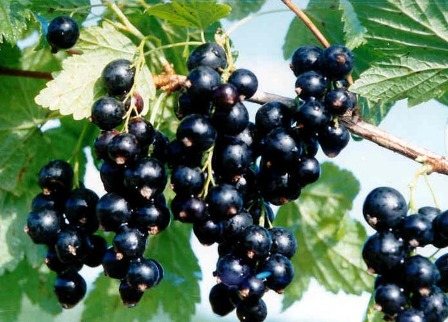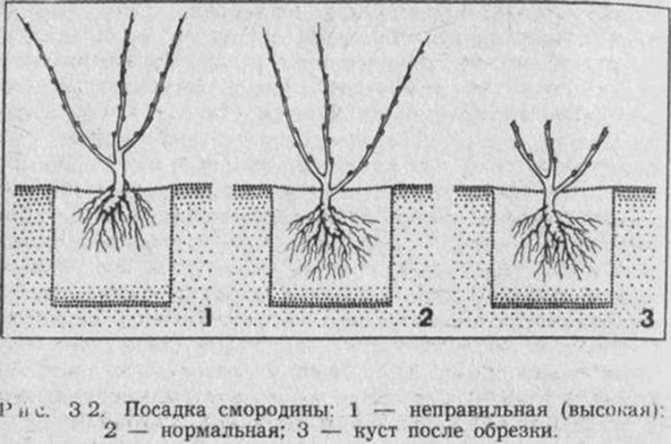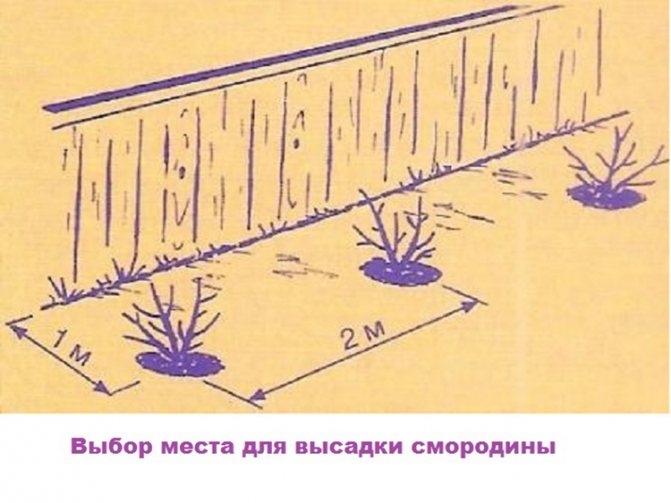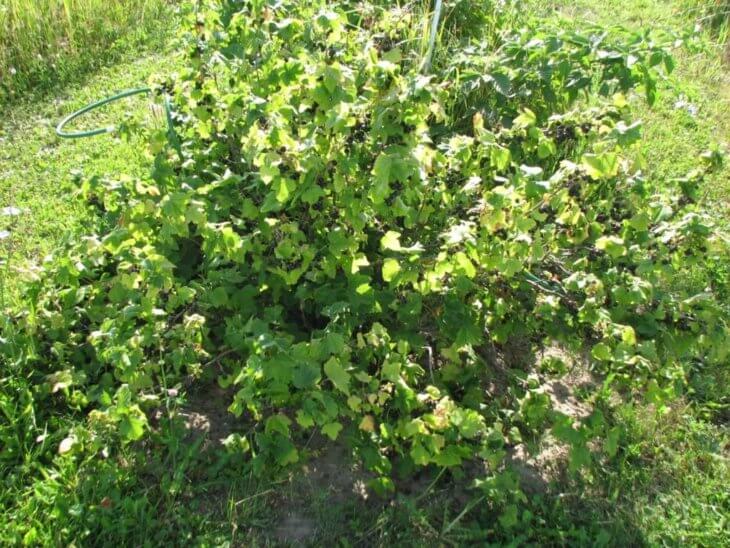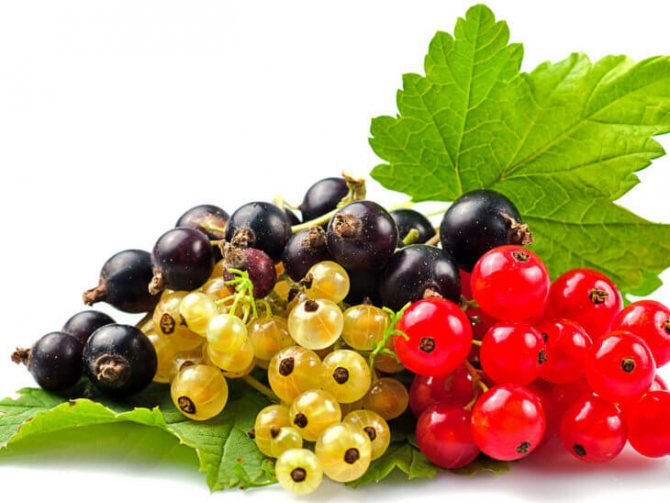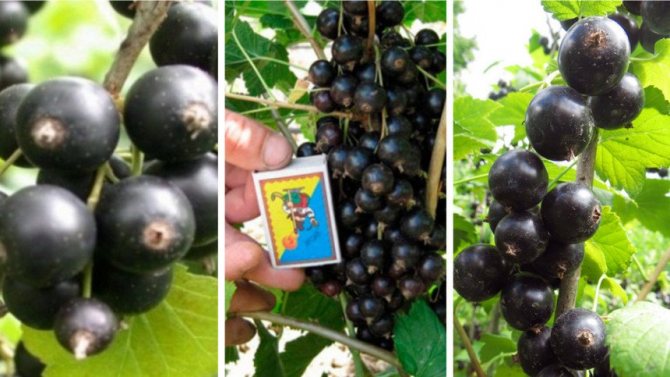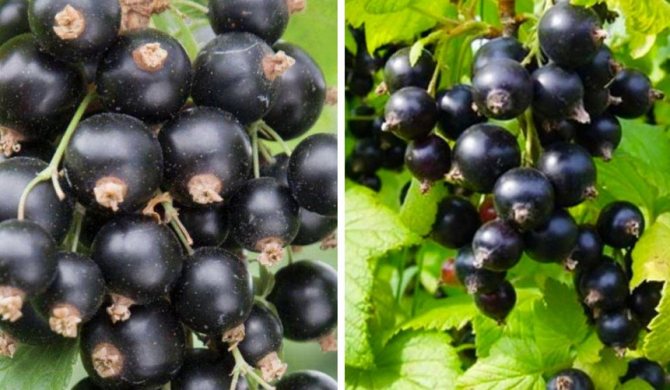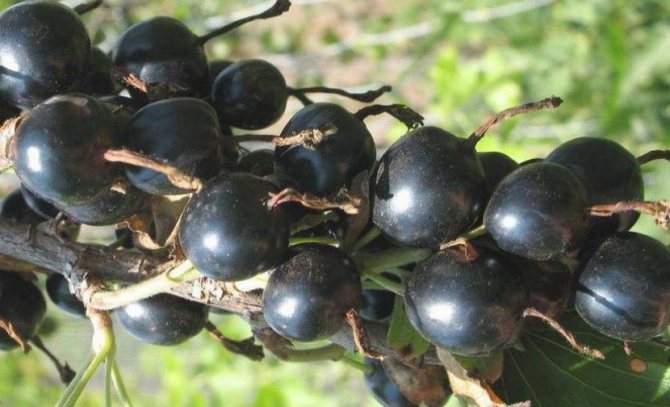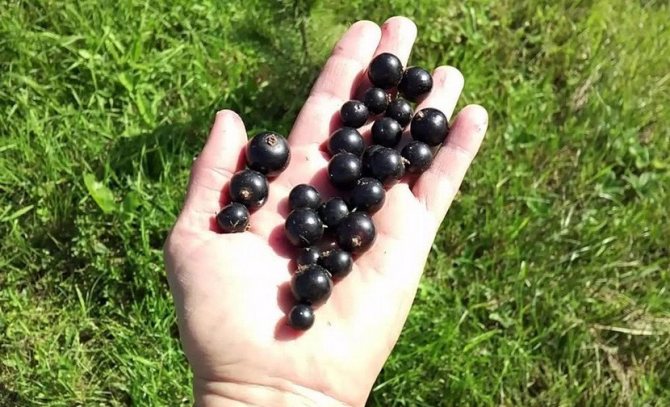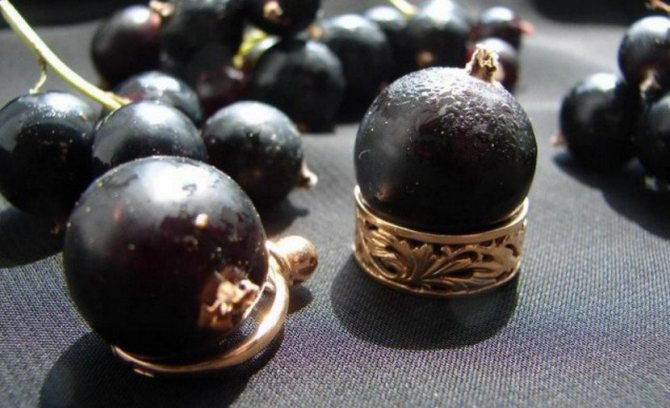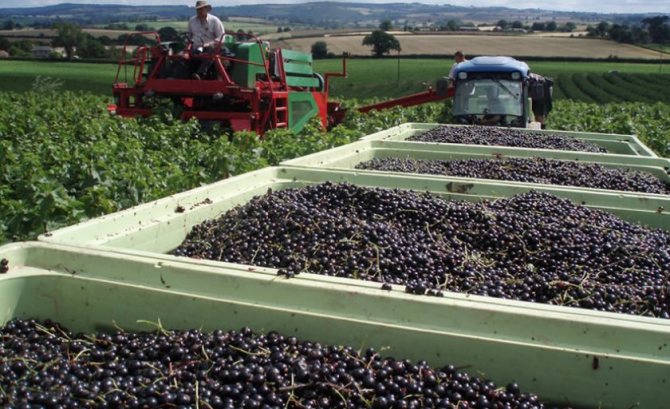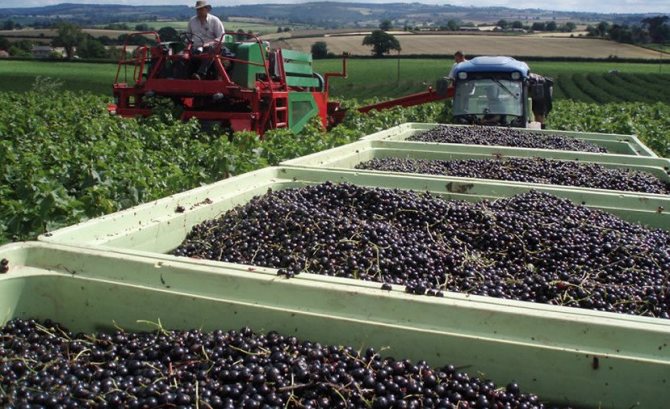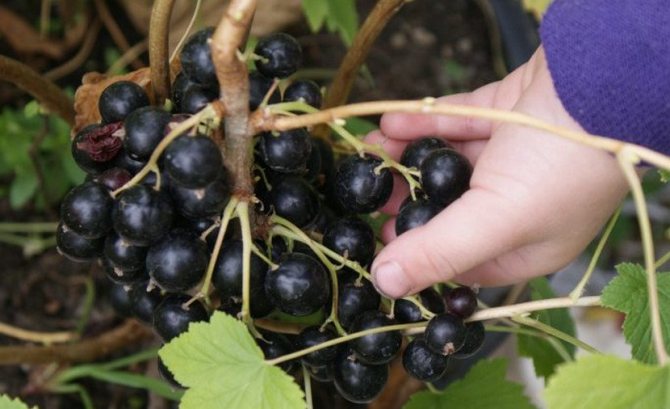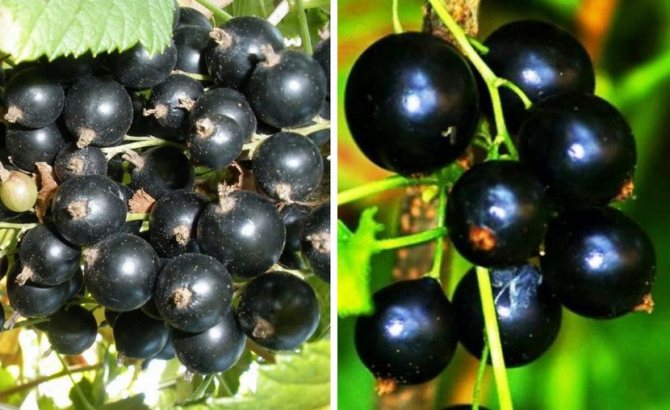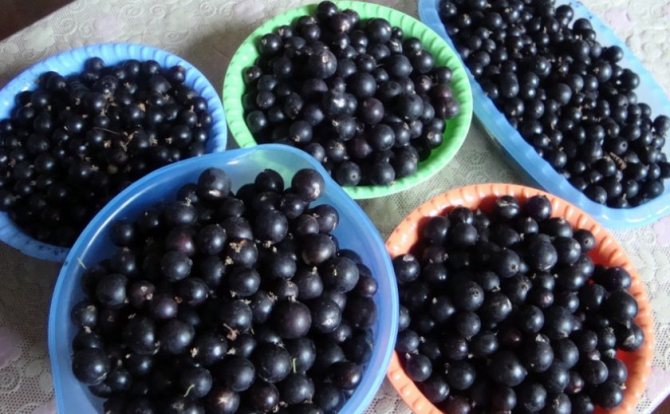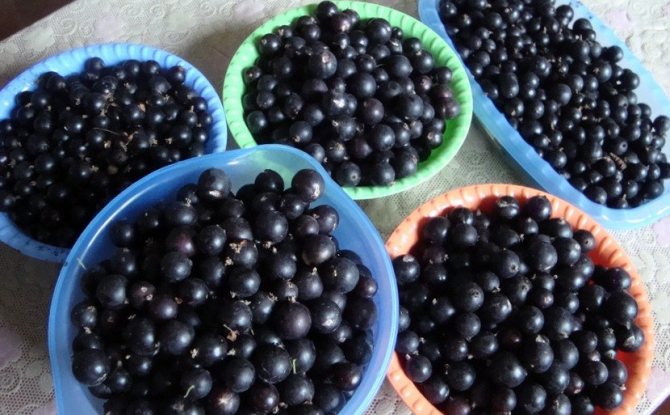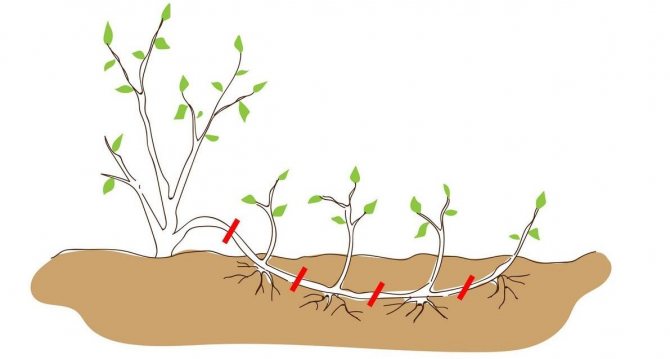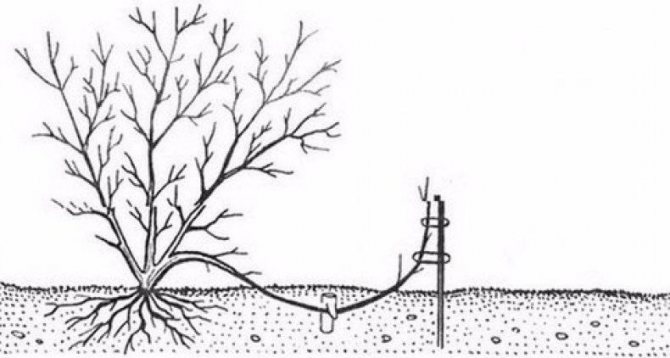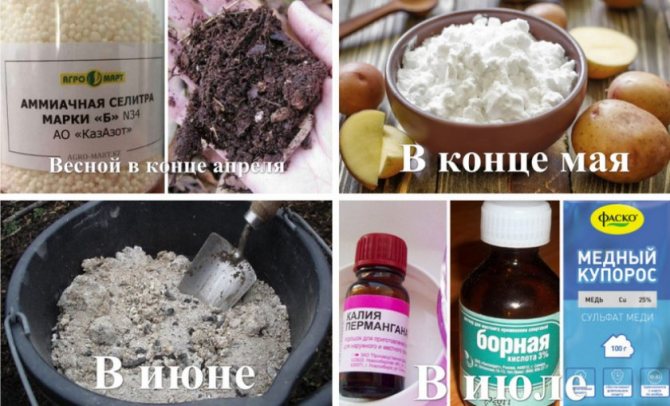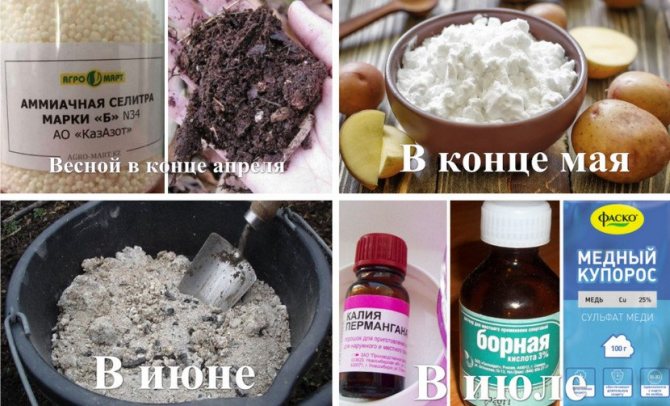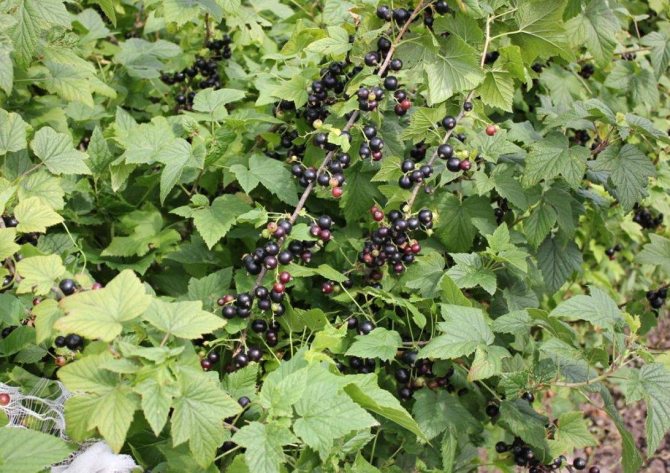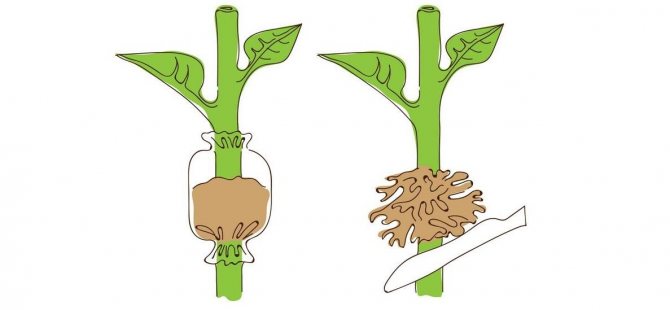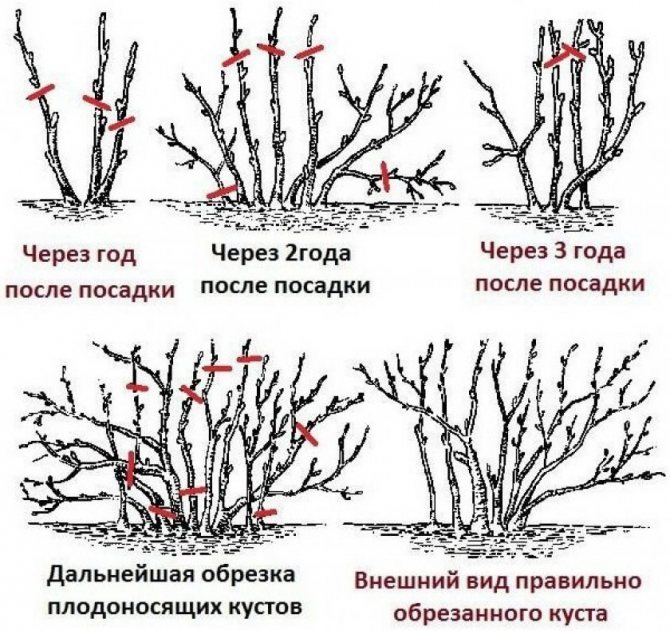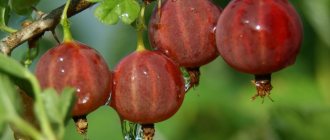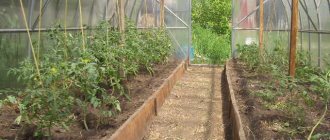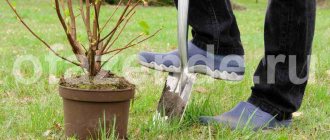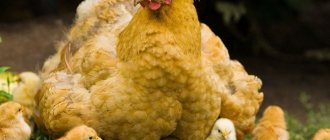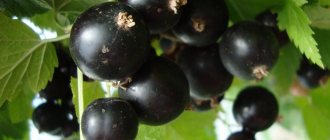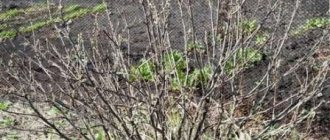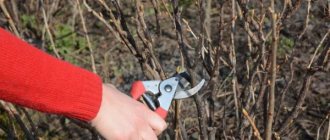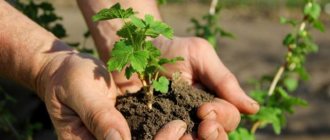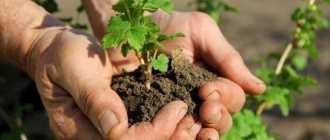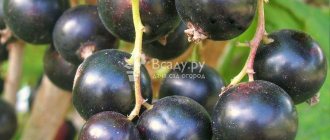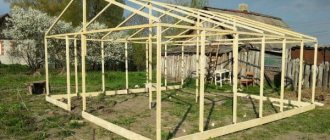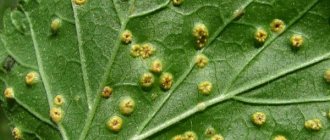The best varieties of black currant
If the currant does not bear fruit well, it is possible that a poor-quality planting material was picked up. When choosing varieties, pay attention not only to the overall yield, but also to disease resistance and frost resistance.
Popular early varieties of black currant:
- Selechenskaya - the yield is 1.5-2.8 kg per bush, the berries are very large 2.2-5.0 g, winter-hardy, resistant to diseases.
- Delicacy - yield 1.8 kg per bush, average berries 0.9-1.1 g, high winter hardiness, average resistance to diseases.
- Summer resident - harvest 1.5 kg per bush, large berries 2-3 g, winter-hardy, resistant to diseases.
Medium ripening blackcurrant varieties:
- Dobrynya - yield 1.5-2.4 kg per bush, berries are very large 2.8-6 g, winter-hardy, resistant to powdery mildew.
- Black Pearl - yield 2.6 kg per bush, average berries 1.3-1.4 g, high winter hardiness, resistant to powdery mildew.
- Pygmy - yield 2-5.5 kg per bush, berries are very large 2.5-5 g, high winter hardiness, resistant to powdery mildew, sweet berry taste.
The best late varieties of black currant:
- Vigorous - the yield is 1.5-2 kg per bush, the berries are very large 2.5-5.5 g, winter-hardy, resistant to powdery mildew, kidney and spider mites.
- Bagheera - yield 3.6 kg per bush, large berries 1.8 g, winter-hardy, resistant to diseases.
- Vologda - yield 3.6 kg per bush, large berries 2 g, winter-hardy, average resistance to diseases.
Best of the Best: Large, high-yielding blackcurrant varieties that are disease resistant.
- Black Boomer - medium ripening yield 5-7 kg per bush, berries are very large 3-6 g, winter-hardy, disease-resistant, sweet berry taste.
- Little Prince - an early variety, yield 4.0-4.5 kg per bush, large berries 1.8-2 g, high winter hardiness, resistant to powdery mildew, bud and spider mites.
- Tamerlane - medium ripening period, yield 4-5 kg per bush, large berries 1.8-2 g, high winter hardiness, resistant to fungus.
- Cardinal - medium ripening period, yield 3-4 kg per bush, large berries 1.2-2.0 g g, high winter hardiness, resistant to diseases and pests.
- Titania - an average ripening period of 2-4 kg per bush, large berries 1.5-2 g, average winter hardiness, disease resistant, sweet berry taste.
How to care for black currants.
Regardless of which variety you grow, the basic rules for caring for black currants should always be followed:
- Planting is the best place for penumbra currants.
- In early spring - preventive treatment of the bush with boiling water.
- In early spring - pruning the bush.
- During the year - watering, loosening, protection from pests.
- In spring and autumn - fertilizing with organic fertilizers or mineral fertilizers containing nitrogen.
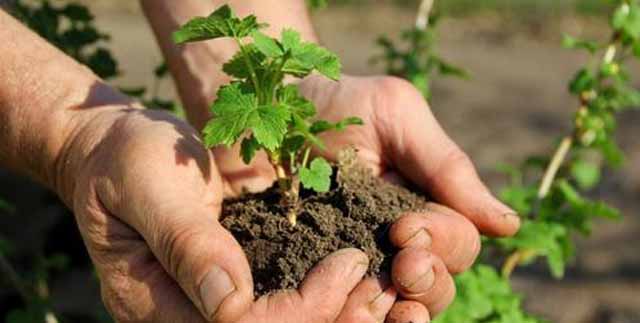
Growing process
To obtain a good harvest when growing black currant, certain agricultural techniques must be observed. From the very beginning, you need to analyze the soil and climatic conditions. By evaluating these parameters, it is possible to optimally determine the varieties and options for plant care. Soil analysis includes determining the type of soil on which the seedlings will be planted. Subsequent care, as well as the amount and type of fertilizer applied, depends on the condition of the soil.
Varieties must be selected based on the type of climate in a particular region, taking into account the seasonal air temperature and the amount of precipitation. It is necessary to prepare the soil 2-3 weeks before the intended planting.
A zone with black soil is best suited for plant growth. Currant grows well and bears fruit on clay and loamy soils, tolerates sandy soil worse.
Site preparation and purchase of seedlings
The entire surface of the area allocated for planting this crop is dug up, then leveled. Depending on the varieties, the bushes are placed at a distance of 1.5 to 3 meters. Organic and mineral fertilizers should be added to the planting pits: peat, humus, ash, as well as phosphates, potassium and nitrogen fertilizers.
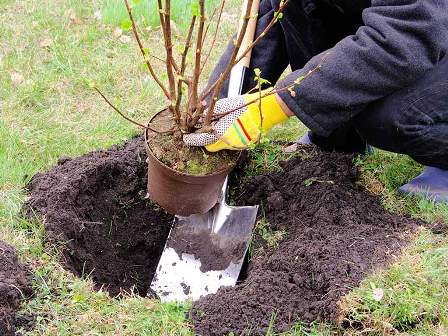

It is very important to obtain healthy planting material. When choosing seedlings, you should pay attention to the following points:
- the roots should not have dry processes, fibrous and skeletal formations;
- shoots should be light gray with well-developed buds.
In addition, it is worth considering the transportation rules. In order for the seedling to withstand the move well and not weaken by the time of planting, it is necessary to protect the roots with moist material, and tie the shoots with a net or place in a plastic container.
Landing
The best time for planting seedlings is autumn. However, it is possible to plant black currants in the spring, provided that the ground is well warmed up and there is no threat of frost. The planting method depends on the material: it can be seedlings or cuttings.
In a pit prepared and filled with two-thirds of the nutrient mixture (from the above fertilizers), you need to drink about 20 liters of water. Then the cutting should be placed in the recess at an angle of 45 ° from the surface of the earth. In this position, the plant develops the root system better. Saplings, unlike cuttings, are placed vertically in the pit. Next, the hole needs to be covered with earth, and a small amount of humus or peat should be poured on top.
To obtain a stable harvest, it is necessary to create and maintain favorable conditions for plants. The top layer of the earth should be loosened regularly and the necessary nutrients should be applied. In spring and autumn, the soil should be dug around the plants, while being careful not to damage the root system.
Currants love water, but excessive amounts of it can harm it. Therefore, watering is carried out as needed. Several times during the summer season, the soil should be soaked to a depth of 40 cm.
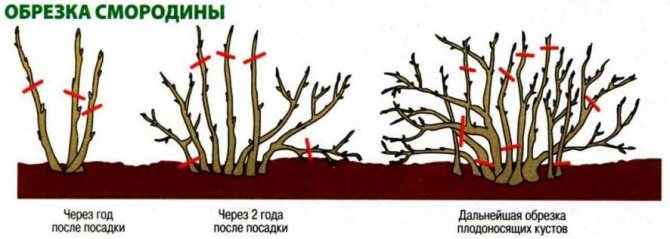

The black currants need to be cut off. For the formation of bushes and the prevention of diseases in spring and autumn, it is necessary to remove excess shoots. The bush is formed during the first four years. Then the old branches are simply removed for the purpose of rejuvenation.
After the berries have ripened, they must be collected. This can be done manually, but for large volumes it is recommended to use harvesting equipment. For the collected products, it is necessary to create conditions in which it will be stored until the moment of sale.
Planting black currant
Plant in early spring or fall. Make sure that the distance between the seedlings is at least 1.5-1.8 cm. Pay attention to the condition of the sprout. Its root should not be diseased, deformed or dry.
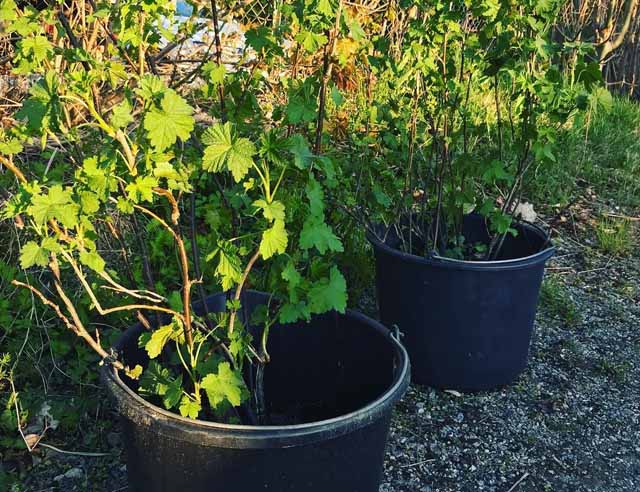

- dig holes that are at least 50 cm long and wide;
- fluff the ground at the bottom of the pit, add fertilizer to it - a mixture of superphosphate and humus;
- cover the fertilizer with a 10 cm layer of soil;
- pre-moisten the roots of seedlings or soak in water for 12 hours;
- arrange the sprouts at an angle, straighten their roots;
- cover the root and part of the sprout with soil.
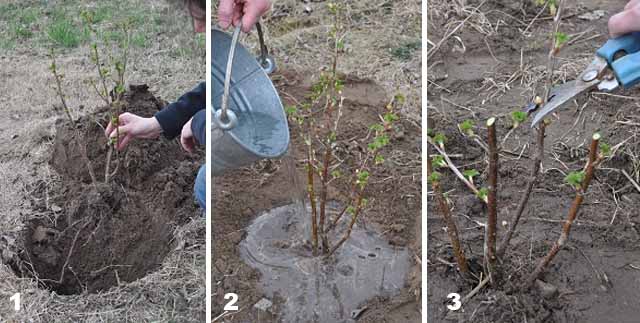

If planting in the fall, water the seedlings once and mulch the soil around them. When planting in spring, you need to water young plants more often, as the soil dries.
How to process currants with boiling water
Boiling water treatment is one of the most effective and healthy methods of preventing blackcurrant diseases: such treatment helps to fight ticks, powdery mildew, aphids and fungal diseases.
Processing is carried out only before the beginning of sap flow in early spring. Before processing, branches damaged by the tick are cut out - in the lower part they have a round growth in which the ticks hibernate. Cut branches are burned.
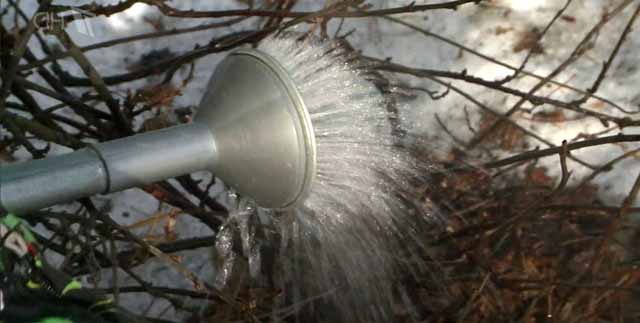

After that, black currant bushes are poured with boiling water at 60-80 degrees. Hot water contact with a branch should be no more than 5 seconds. The roots of the bush during processing must be protected with oilcloth or boards. Water consumption 1 bucket for 2-3 bushes. Each branch must be carefully processed. The presence of untreated pieces will lead to subsequent infection of the entire bush.
Income options
Perennial shrub. Grows well and bears fruit in partial shade on moist soils with high levels
The main income is usually based on the sale of berries. But even if you did not manage to sell the entire crop at once, you can freeze it and sell it at a higher price in winter. Alternatively, make jam or jelly and also sell during the cold season. But besides berries, the currant business involves several more variations.
Currant leaves
When pruning currants, it should be borne in mind that on red and white currants, fruits appear on old shoots, while on black currants, berries are formed on young branches. The optimal shape for red and white varieties is a bowl-shaped bush with five main branches, initially cut at a height of about 20 cm from the ground. Black currant bushes can be formed, depending on the variety, compact or spreading, but avoiding thickening, while it is recommended to cut off old branches near the ground, followed by hilling, due to which the growth of young shoots is activated.
Having finished picking berries, caring for currant bushes must be continued, and intensified. It was at this time that the necessary activities are:
Bath brooms
Black currant: varieties, cultivation and care "
If the summer is dry and hot, water the currants at least after 7-10 days. The norm in this case is up to 50 liters for each bush. Experienced gardeners advise to dig circular grooves around the bush (about 20-25 cm from the ends of the stems), and pour water into them.
Saplings for sale
• do preventive examinations of the plant and immediately remove the affected buds, leaves, shoots
Therefore, to increase the yield, a special top dressing is used:
How to prune blackcurrant bushes:
Prune in the fall before frost or in early spring, before buds are on the branches. Pinch young shoots in the middle of summer.
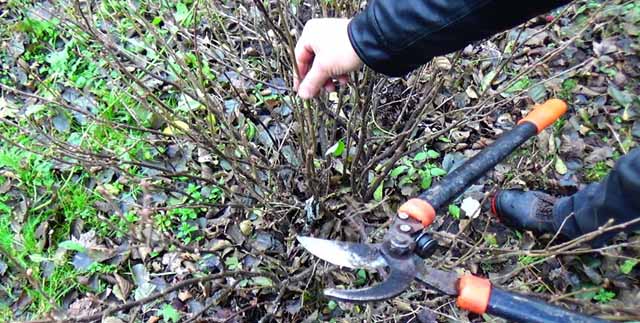

- the general rule is that in a bush there are 3 shoots each year, stems older than 5 years are cut off at the root;
- it is much easier to correctly form a young bush than trying to squeeze the crop out of a thickened bush with one pruning;
- in the first year, cut all the shoots of the seedling to 3 buds;
- in the second year, leave 3 young shoots, and cut the tops of each of them into 2 buds;
- for 3-4 years, shorten the tops of last year's branches, and leave 3 pieces of young shoots, shortening them by 2 buds;
- from 5 years onwards, carry out the complete removal of branches over 5 years old, and leave 3 pieces from young shoots, shortening them by 2 buds.
- after 10-15 years, rejuvenate the bush by dividing and transplanting.
How to feed black currants
Like all plants, currants need feeding throughout the season.
Fertilizers for currants:
- during the budding period, feed the bushes with urea at the rate of 40 g for young, and 25 g for plants over 5 years old;
- after harvesting, feed the soil under the currants with a mixture of organic fertilizer (5 kg), superphosphate (45 g), potassium sulfate (10 g).
This fertilizer will be enough for the normal growth of the bushes and the formation of a large number of large sweet fruits.
How to propagate black currants.
The plant reproduces in three ways - cuttings, layering and dividing the bush.
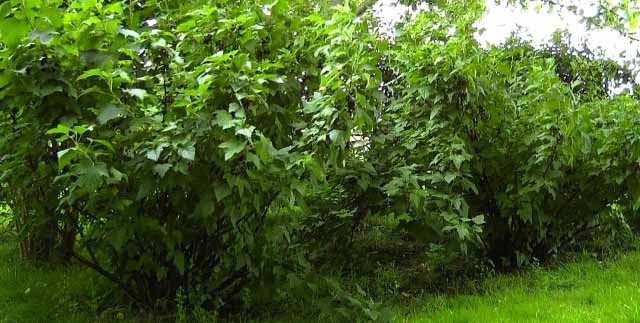

Reproduction by layering:
Reproduction by layering is an easy method, which is carried out in early spring, and allows you to get excellent planting material:
- choose a two-year-old branch that can be easily bent to the ground;
- mark on the ground where the middle of the branch touches the ground;
- in the marked place, dig a hole up to 10 cm deep;
- bend the branch with the middle part into the hole, secure it with wire to the ground and fill it with soil;
- the top of the branch should protrude 25 cm above the soil level.
With regular summer watering, you will get a strong seedling with a powerful root system. With the arrival of autumn, you can plant it separately.
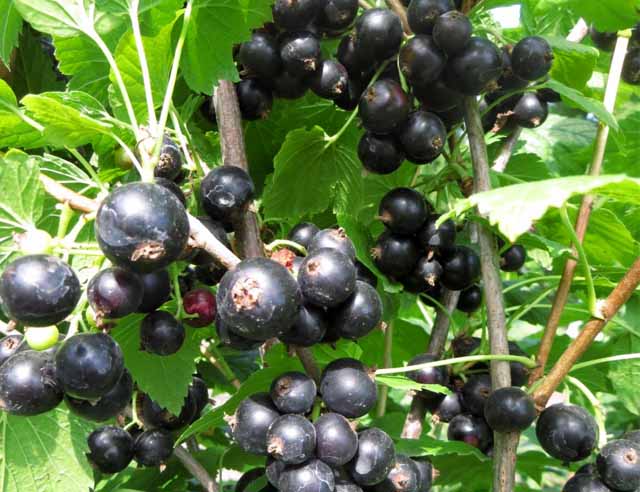

How and when to plant black currants with cuttings:
Saplings from cuttings are not as strong as when propagated by layering, but this method has its advantages. This is an opportunity to receive planting material year-round, and plant it at a convenient time - in spring or autumn.
Separate the cuttings at the end of October, and in the spring they can be planted on the site. To do this, cut out the middle part of a strong annual shoot up to 25 cm long and up to 10 mm wide. Dip the cuttings in paraffin wax, tie the cuttings of the same variety with thread, and wrap them in a damp paper towel. Wrap the resulting bundles with foil and store under a layer of snow or in the freezer.
Plant the resulting cuttings immediately after the snow melts:
- before planting in open ground, cut off the lower part of the seedling at an angle with a damp knife to remove the remaining paraffin;
- dip the cuttings into the prepared soil at a slight angle, leaving a few buds;
- the distance between seedlings should be at least 15 cm;
- water the beds well and lay a layer of mulch;
- cover the beds with plastic wrap until the first leaves appear.
In the future, water the young shoots as needed, remove weeds. You can also feed the soil with a solution of cow dung infused for 2 days (0.5 buckets of fertilizer for 4 buckets of water). 10 g of superphosphate and 500 g of ash can be added to the same mixture. With the onset of autumn, transplant young seedlings to a permanent place.
If you didn't have time to prepare the cuttings in the fall, you can cut them in early spring. In this case, the planting material is immediately dipped into the ground, after which it is covered with a layer of mulch and a film.
In mid-February, you can cut fresh cuttings from the bush and place them in water. As soon as the roots grow and get stronger, plant the sprouts in disposable glasses, and when it gets warmer - in the open ground.
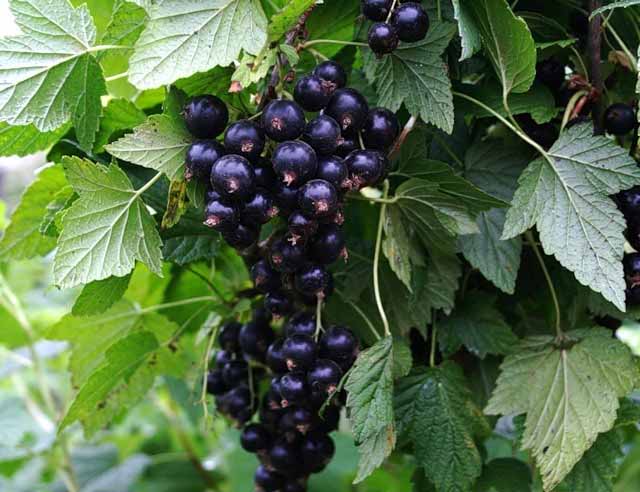

Reproduction by dividing the bush:
The division of the bush is suitable for reproduction in cases where it is required to rejuvenate a plant that is more than 15 years old:
- in the spring, dig a bush, remove old and damaged branches from it;
- pinch the tops of young branches;
- divide the bush into several parts, each of them should have 2-3 strong shoots;
- Dig the resulting seedlings into the ground and water abundantly.
Delenki of currants need to be watered all summer, and by autumn they will root perfectly and give many new shoots.
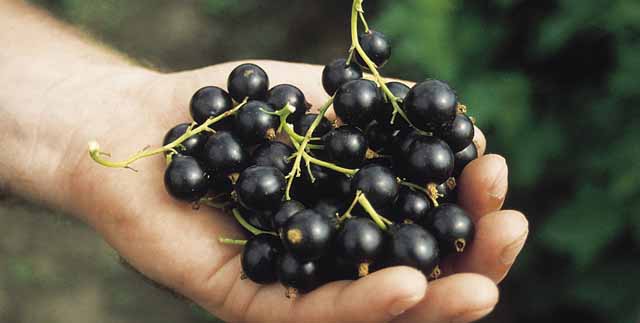

Correctly follow all the recommendations for growing, and black currants will annually produce a large harvest of large and tasty berries that are so beneficial to your health.
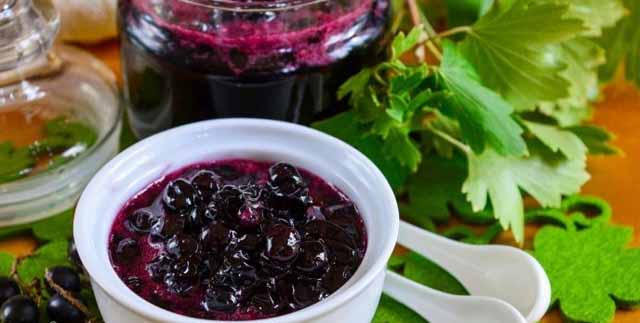

The fruits of this plant are best eaten raw, but can also be preserved, frozen or dried for the winter. There is always a use for currants, and the more of it, the better.
There are certain factors that you need to know and take into account in order to get consistent and high yields of such healthy and tasty berries as currants. It is important to know agricultural techniques and apply them correctly, as well as to have appropriate growing conditions.Without good care and a suitable landing site, nothing will work. In the article we will tell you about the yield of currants, ways to increase it.
Benefits of grafting
Cuttings are considered the easiest way to propagate black currants.
- The undoubted advantages of this technology include:
- The ability to harvest planting material several times a year.
- The resulting sprout will retain all the characteristics of the parent plant variety.
- Saving money on the purchase of planting material (you can get many seedlings from one plant).
- The ability to plant a young plant in a permanent place of growth without subsequent transplantation.
- Cutting cuttings does not harm the mother plant, moreover, harvesting can be done during sanitary pruning of an adult shrub.
Did you know? Black currant is called
"FROM
northern lemon
»
for the content in fruits of a large amount of vitamin C.
Calculation of the yield of currants
The yield of open field currants is rather unstable. Even with good care, it largely depends on the growing region, weather and other conditions. Correct pruning and shaping plays an important role, since branches of different ages and the bushes themselves can have unequal fruiting.
But, of course, the yield directly depends on the correct choice of the variety. At the same time, it is important to imagine what the final result should be roughly expected, taking into account the region and ripening time.
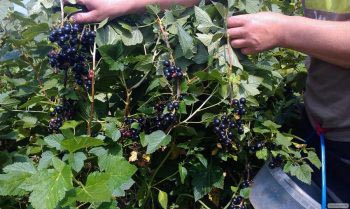

To avoid losses, crops are harvested from crumbling varieties in several stages, as the berries ripen.
- Productivity from one bush - from 1 to 3-7 kg;
- From a hundred square meters you can get from 50 to 150 kg;
- An average of 5 to 10 tons are harvested per hectare. Some varieties with intensive cultivation, for example, Argazinskaya and Pygmey, can yield products from 13 to 30 t / ha;
- In Russia, on average, it comes out from 0.7-2.0 kg / bush;
- In the suburbs - 1-3 kg / bush.
- All other things being equal, this species shows on average approximately the same as with black currant, and for some varieties, even a higher yield - from 3 to 7-8 kg / bush.
- Experienced summer residents with large-fruited and high-yielding varieties with intensive cultivation can receive up to 12-14 kg from one adult plant.
- from one hundred square meters get an average of 100-180 kg;
- per hectare 10-18 tons.
The yield indicators of currants in the greenhouse under optimal conditions and care practically do not differ from soil ones, and in the case of intensive cultivation and correct selection of the variety, they can be higher by 0.5-2.5 kg from the average data. ".
Features of the business of growing black currant
Black currant is a perennial shrub of the Gooseberry family, growing up to two meters in height, having pale gray or brown shoots with large dark green three- or five-lobed leaves and drooping clusters of inflorescences. The plant is widespread in almost the entire European part of Russia, in the south, as well as in the forest zone of Siberia. Blackcurrant fruits, rich in vitamins and minerals, are used for culinary and medicinal purposes. The production of jams and preserves, confectionery, the production of juices, compotes, jelly and even wine - this is not a complete list of the branches of application of this fragrant berry.
The black currant business does not require a large investment at the entrance. First, you can use the summer cottage or the land of your personal subsidiary farm, then private household plots (see business on your own land). As a planting material, you can use cuttings of good bushes that are already growing on the site, or purchase them in a nursery. The average price of one young seedling is from 70 to 100 rubles. At the first stage, with a small planting area, you can do without the involvement of outside labor and special equipment.
Choosing a productive variety
On the site, it is preferable to have at least three different varieties of currants of the same type, but different ripening periods. This contributes to better pollination and increased yields. In addition, the harvest will take a long time, fresh berries will be on the table all the time, and small batches will be easier to process.
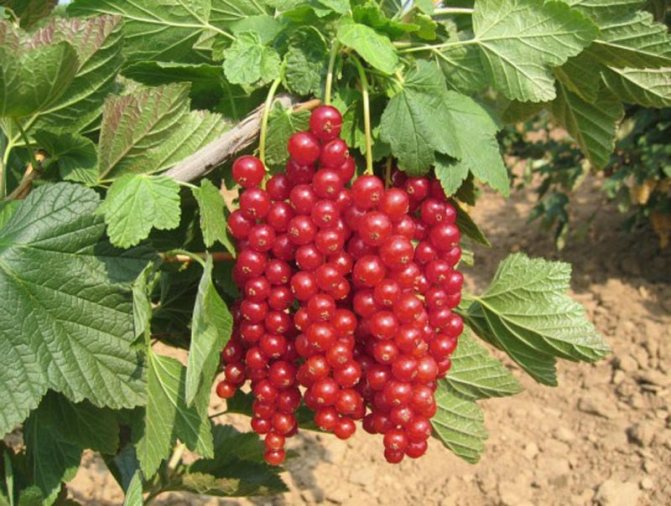

Red currants are productive and easy to care for, brushes with large berries look very decorative
Black currant varieties
When choosing, fruitful, zoned varieties with resistance to diseases and weather instability are preferred. For the northern regions, varieties with increased winter hardiness are suitable, for the central ones - those adapted to weather changes, and for the southern ones - those that can withstand drought and heat. Some recommendations for choosing varieties for a temperate climate are presented in the table:
Read also Flowerbed with irises and daylilies
| Name | Maturation | Productivity kg / bush | Characteristics |
| Little Prince | Early maturing | 5-6 | Medium spreading bush, resistant to frost, heat and disease |
| Pygmy | Early ripe | 3-6 | Large-fruited, stable yield, unpretentious |
| Aleander | Early | 4-5 | Resistance to frost and major diseases |
| Curiosity | Early | 5-7 | Resistant to frost, but watering is required in the heat, the bush is semi-spreading |
| Lazy person | Late | 1-3 | Not sick with anthracnose, frost-hardy, large and tasty fruit (2.5 g) |
| Gulliver | Late | 3-5 | Highly resistant to frost, drought, unpretentious, stable yield |
| Summer resident | Early | 2-4 | Highly resistant to spheroteca, tasty and large berries, low and spreading bush |
| Exotic | Early | 3-5 | Straight bush, berries the size of cherries and larger, well resistant to powdery mildew |
| Ant | Early | 3-5 | Stable yielding, medium spreading, medium height, vitamin |
Red, pink and white currant varieties
Caring for these species is much easier. They are less likely to be affected by diseases and pests, are drought-resistant, and have a strong root system. The bushes are compact and retain their productivity with proper care for many years. The data on the choice of varieties are presented in the table:
| Name | Maturation | Productivity kg / bush | Characteristics |
| Red currant varieties | |||
| Jonker Van Tets | Early ripe | 2,5-4,2 | The berries are collected in long clusters, pleasant to the taste, the bush is straight, not spreading |
| Dutch red | Late | 2,5-5,1 | Resistant to major diseases, the berries are sour, the bush is tall, |
| Natalie | Mid-season | 2,5-4,2 | Medium resistant to adverse factors |
| Red Lake | Mid-season | 2,5-4,1 | Resistant to adverse factors and a number of diseases, large-fruited, tasty berries |
| White currant | |||
| Smolyaninovskaya | Mid-season | 2,5-4,1 | Resistant to stains, the berries are transparent, tasty, with sourness |
| White fairy | Mid-season | 3-5,1 | Resistant to unfavorable factors, medium-fruit berries, very good taste, low bush |
| Bayan | Late | 3-4 | Resistant to diseases, medium-sized bush, medium-fruited berries |
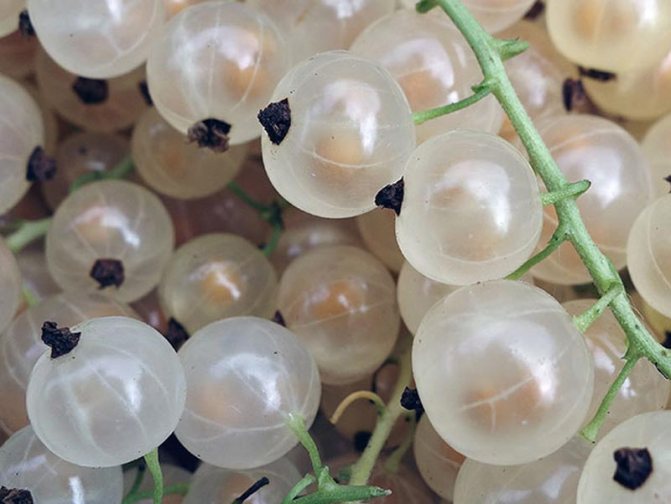

The variety of white currants "White Fairy" gives stable yields of tasty berries, unpretentious in care
Comments (5)
Marina
19.05.2018 at 00:15 |
In our garden, currants grow, several bushes in a row, the harvest is rich, good, but we distribute it for free to relatives and preserve it, we have nothing left for sale, even though we hunt to earn extra money.Reply
Irina
22.10.2018 at 06:20 |
There is also an idea to sell surplus berries. But while the bushes are still small, we are just picking a berry for ourselves. I plan to offer it to my friends. Now there are many purchase offers on the Internet.
Reply
Julia Expert Plodogorod
22.10.2018 at 16:11 |
Hello Irina! If you correctly take up the cultivation of currants, then according to the owners' reviews, you can get a good income, as well as provide yourself and your family with useful berries.
The first thing that gardeners who have decided to deal with currants on an industrial scale will certainly face are diseases and especially pests attracted by the abundance of bushes.In early spring, even if there are no signs of problems, spray the bushes with complex accumulative preparations.
For some diseases, for example, powdery mildew, you need to process the bushes on a monthly basis. Fitosporin can be used. Due to its properties, berries can be eaten almost immediately after processing.
Also, the variety is important. Choose one that does not have very large and dense berries. Then they will be well stored both on the bush and in containers, without losing their presentation.
Do not use buckets for harvesting. The currants will gag and flow. The sale of such a product will be impossible, and labor and money will be wasted. An acceptable option is boxes, for example, made of thick cardboard, packed with wax paper. Place the berries in a thin layer.
Do not neglect the removal of old and dry branches. This will allow you to get a stable harvest every year.
Reply
Gosh
07.01.2019 at 00:22 |
In our country house, red and black currants grow. First, we bought several varieties of it in the nursery, and then they were planted with cuttings. Currants are very well accepted. With black currant, there is more work than with red, old branches need to be removed more often, otherwise the next year the harvest will be very small. Red currants are not as sensitive to pruning. We have only 10 currant bushes, but with so many business it will not work.
Reply
Julia Expert Plodogorod
09.01.2019 at 18:50 |
Hello Gosha! Yes, ten bushes is not much, but over time the currant will grow and the harvest will be greater, not to mention the fact that it can be propagated. It is only important that the variety that is planted for a long time can stay on the bush without dropping or souring, as well as lying well and not flowing at the same time.
In most cases, it is possible to understand whether the correct variety is chosen only experimentally. Therefore, we recommend planting several at once and assess how they are suitable for your goals. Also, a good result can be obtained by planting varieties that ripen at different times. Then you will not need to harvest crops for sale in an emergency mode.
It is important, in pursuit of a large harvest, not to plant a large number of bushes close to each other. Because of this, the number of berries will not increase, but decrease, and you will have more trouble. The branches will intertwine, shade each other, and the plants themselves will compete for light and substances from the soil. The minimum distance is one meter, and the optimal distance is two. And don't plant plants along the fence. It is necessary to maintain a distance of at least one meter.
A good harvest cannot be obtained without necessary and regular feeding. In early spring, nitrogen fertilizers are applied, and in the fall, a sufficient amount of organic fertilizing, for example, manure or dung. In the same period, they are fertilized with superphosphates. Special instant mixes are available. Main application periods: foliage, flowering, fruit setting. With such support, the bush will have more strength to form berries, which, of course, will affect their size and quantity.
It is also important to follow the watering rules. If there is not enough moisture, then the harvest will be small and tasteless. On an industrial scale, it is better to automate this process by installing drip irrigation.
Reply
Choosing a variety of currants for greenhouses
Growing berries in a greenhouse has its own characteristics, which ultimately will determine the yield. And first of all, it is the choice of a suitable variety, which should ideally have the following data:
- productivity and compactness;
- resistance to major diseases, frost, heat and shade;
- early maturity;
- early maturity, that is, it quickly begins to bear fruit after planting;
- tasty, preferably large berries;
- keeping quality and transportability of products when grown for business purposes;
- unpretentious care.
These qualities in one way or another correspond to such varieties of black currants as: Dachnitsa, Pigmey, Nina, Venus, Dobrynya, Gulliver, Bagira, Excellent student, Vasilisa the Beautiful. They show good yield results, and under suitable conditions and care they can even exceed their average values for open ground by 0.5-1.5 kg.
Where to begin
At the initial stage, it is necessary to determine what assets are available to open and develop a business. Pay attention to the following points:
- finance;
- availability and size of areas;
- technical equipment;
- knowledge and experience in the field of crop production;
- implementation possibilities.
If we consider the cultivation of black currant as a home business, then such an undertaking does not require large investments and registration with the tax office. According to Art. 2 of the Federal Law No. 112 "On personal subsidiary plots", the sale of agricultural products grown under the management of private household plots to the population does not apply to entrepreneurial activity, and the income received as a result is not taxed.
However, this format has a number of limitations. So, only the owner himself or his family members can work on the territory of a private farm, and the maximum size of a land plot that can be used for such purposes is 0.5 hectares.
A larger-scale project, involving large volumes of production and cooperation not only with private clients, but also with enterprises, needs strong financing, the involvement of hired workers, the registration of a peasant farm and the purchase of special equipment.
Ways to increase the yield of black currant
The currant cannot be called an overly capricious culture, it is quite unpretentious, but it responds positively to care and pleases with an increase in yield. ". Care should be comprehensive, it includes the following main tasks.
Choosing a site for planting bushes
Those who want to get high yields of vitamin berries should first of all take care of choosing a suitable place on the site. At the same time, it is taken into account that currants react very negatively to salinity, excess chlorine, fertilizers, and the presence of detergents in the soil. For this reason, a compost heap and an outdoor washstand are not placed close to the plantings.
The berry must be well ventilated and well lit. Distance in a row is allowed not less than 1.2-1.5 meters. Remember that thickened planting will reduce the yield of berries from the bush. For spreading varieties, it is possible to install portable supports that help keep berries and leaves from dirt.
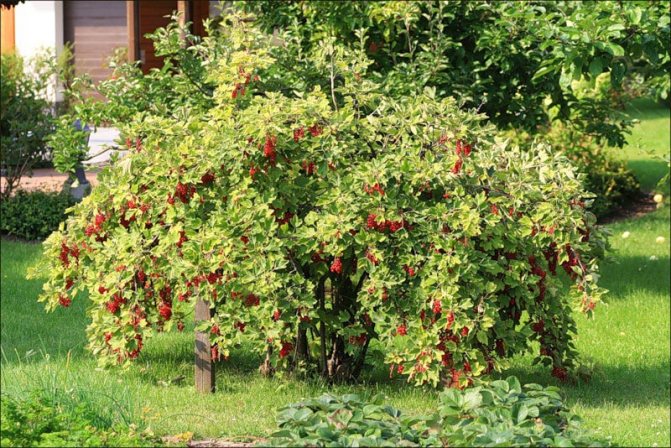

For planting, large-fruited, hardy varieties with good yields should be selected.
Requirements for soil and fertilizing
Medium structural, neutral or slightly acidic, with normal soil moisture are preferred. The most suitable are black earth loams. Heavy clay with stagnant water has a depressing effect on the culture.
Tip # 1. If, when planting in each hole, fill in 6-7 kg of humus, 200 g of superphosphate, 1.5 tbsp. ash, then in the subsequent fertilization can be applied after 2 years.
- The main portions are added in the fall or spring before loosening. Per bush - 4-5 kg of compost, 20 g each of superphosphate and potassium sulfate, which can be replaced with ash (0.5 tbsp.).
- Regular feeding with microelements (manganese, zinc, boron, copper) is desirable, which increase the plant's resistance to spots and other diseases.
- During the period of active growth of bushes and berries, top dressing is done with solutions of organic matter or fermented grass, 1.5 buckets in grooves around the perimeter, which are immediately sprinkled with earth. They can be replaced with solutions of complex fertilizers according to the instructions.
- New varieties of intensive growing type very quickly deplete the soil, so feeding for them should be done more often.
Watering currant bushes in the heat
The need for moisture especially increases during periods of flowering, growth of shoots, berries and after harvest.If at these moments there is no rain, then irrigation is carried out necessarily, using 1.5-5 buckets of water per bush, depending on its age and height. Water for irrigation should not be excessively mineralized with various salts, this reduces the yield and size of berries.
Please note: watering and feeding is carried out only along the perimeter of the crown, under the roots, making sure not to wet the branches and not provoke fungal diseases.
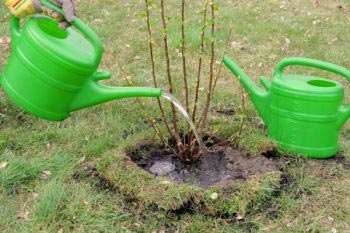

It is very important to observe the regime when watering
Weeding, loosening and mulching the soil
Weeds will have to be fought constantly, since they can cause diseases due to high humidity and poor ventilation in the berry. Loosening can be done not after every rain or watering, but only 2 times a year - in early spring and after harvesting. Weeding, like loosening, is carried out carefully so as not to touch the surface roots of the bush itself.
Tip # 2. To retain moisture and control weeds, it is a good idea to add any mulching material to the rows. This method will significantly reduce the time for planting.
Pruning branches to increase yields
Old branches should be removed in time, they begin to bear fruit worse, and the berries become smaller. In some varieties, a decrease in yield is observed already on 4-year-old branches. And with the constant removal of such branches and replacing them with young ones, the bush may not reduce the yield for a long time.
Stamp forms often give an increased amount of berries from the bush, since they are better illuminated. Another advantage is that they are easy to harvest. To preserve the harvest, do not allow the soil to dry out, especially during the growth and ripening of the berries, otherwise they will begin to crumble. ".
How and when to collect cuttings
It is most convenient to use lignified cuttings, since green ones have weak immunity and a meager supply of nutrients, as a result of which they develop poorly and often die. In the spring, cuttings are cut at the beginning of the active growing season of black currant, when the buds swell (March - April), in order to form full-fledged roots, which is extremely necessary for the subsequent planting of seedlings before the onset of the summer heat.
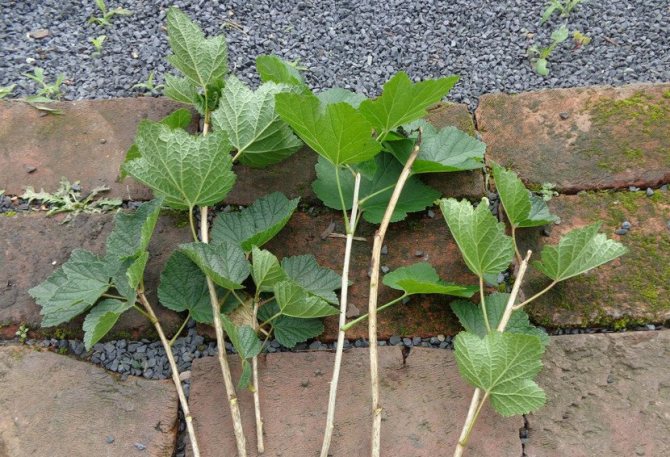

Autumn harvesting of cuttings for further storage is carried out after leaf fall (November).
If it is planned to root the seedling in the ground in the fall, then the planting material should be prepared in September so that rooting occurs before the onset of frost. Cuttings are harvested from basal (main) branches or from annual branches of the first order. Cutting should be done with a sharp knife or blade to avoid an uneven edge.
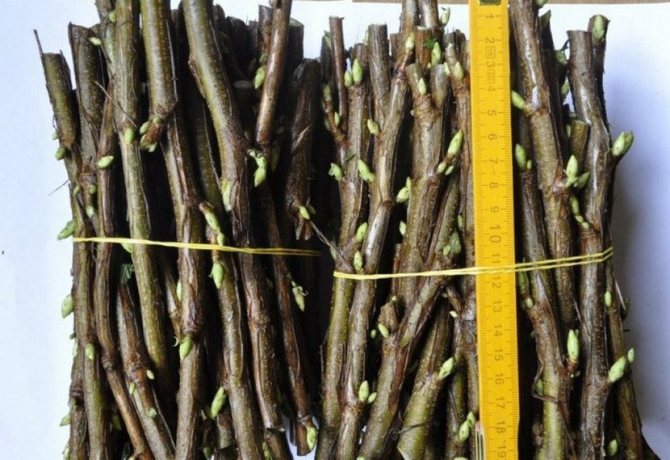

The branch from which the cuttings are harvested must be strong, healthy, at least 7 mm thick. It is cut into pieces 15–20 cm long.
The lower cut is made under the kidney, and the upper one is 1.5 cm above the kidney. The lower cut must be made at an acute angle, the upper cut at a right angle. The upper and lower segments of the branches are not used for propagation by cuttings. It is possible to propagate the plant by cuttings from the second year of growth of the bush.
Important! In the first year after rooting, all buds and flowers on the plant must be removed. The appearance of the ovary and the ripening of berries takes a lot of energy and does not allow the young shrub to fully develop.
Answers to current questions
Question number 1. When is it better to pick ripe currants?
You need to pick the berries carefully so as not to mash, preferably in the morning, in cool and dry weather conditions.
Question number 2. Diseases and pests are known to negatively affect yields. How to get rid of such a dangerous pest as a currant mite?
If the bushes are slightly affected, then they should be sprayed with sulfur in a timely manner, the damaged buds should be cut off and destroyed, the damaged shoots should be cut and burned. If the bush is heavily infected, it will have to be completely cut and burned.
Question number 3. Is it possible to increase the immunity of currants to various diseases?
Yes, the resistance of a plant to diseases and pests can be increased by timely feeding with microelements, as well as potash fertilizers.
Question number 4. Why do the berries become small, fall off, and a dry rim appears on the lower tier of foliage along the edge? How to deal with this?
Most likely, this came from a lack of potassium in the soil. It is necessary to make foliar dressing from a solution of potassium sulfate (2 tsp per 1 liter of water).
Question number 5. What varieties of black currant have the largest berries?
Today these are such varieties as Yadrenaya, Rusalka, Dyagterevskaya, Pygmey, etc. But it should be noted that they are zoned for a certain region, in other climatic conditions the size of the berries may decrease.
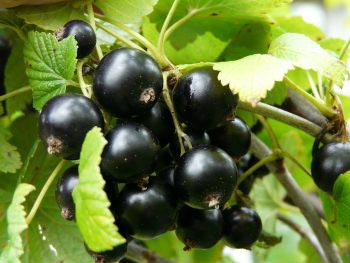

Large-fruited varieties of Siberian selection, sometimes reaching the size of a plum, can produce smaller berries when grown in other regions
Rule 4. Treatment for diseases and pests
Absolutely resistant varieties do not exist, so prevention, and even more so, treatment of plants must be carried out regularly and in a timely manner.
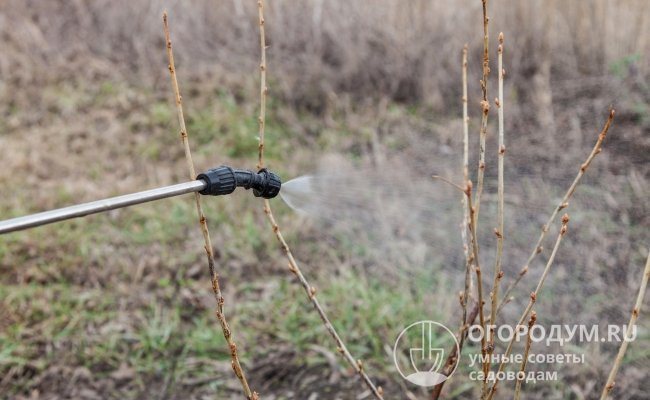

To prevent diseases, bushes in early spring are advised to be sprayed with vitriol solutions (3% copper or 5% iron)
At the stage of the appearance of flower buds, it is advisable to treat the bushes with insecticides in order to protect the future crop from insect pests (aphids, spider mites, gall midges, etc.). There are many drugs today, when using them it is important to observe the dosages and precautions indicated by the manufacturers. Spraying with a 1-3% solution of Bordeaux liquid is advised to be carried out at the initial stages of the growing season of plants, as well as when minor lesions appear on them. Such a remedy helps to prevent the occurrence of fungal diseases or to avoid the spread of infection. It is better to cut off and burn badly damaged leaves and shoots of currants.
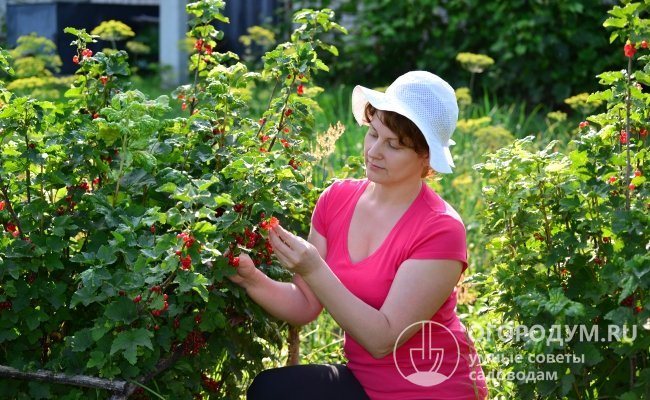

With proper care, currants can produce fruit stably in one place for many years.
How to get rid of ants on currants
Currants often suffer from aphids. As a rule, aphids do not come to plants on their own. Garden ants are to blame for its appearance. The fact is that ants are very fond of the sweet "milk" that aphids give off. Therefore, they act like shepherds: they "settle" aphids in the bushes and literally "graze" them, protecting them from enemies (for example, ladybirds). It is often unsafe and ineffective to spray the currants from aphids with insecticides: if there are ants in the garden, they will monitor the “livestock” and populate the bushes with new colonies of aphids instead of the dead.
There are ants on every site, and no one has yet succeeded in exterminating them completely. But they can be scared away from the currants. Well suited for this garlic infusion: peel the head of garlic, chop the cloves (you can squeeze out through a press) and pour 1 liter of warm water. After 2-3 hours, filter the infusion, and then spray the bushes and the soil under them. You can also lay the remaining thick around the currant trunks. Ants leave such bushes, and aphids perish on them. It is clear that the processing must be carried out long before the berries ripen, because the smell is quite persistent.
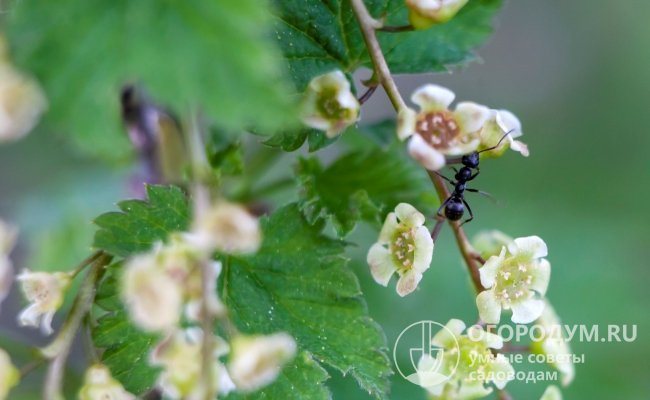

No one has yet been able to completely exterminate the ants from the site, but you can scare them away from the currants with the help of garlic
Take care of your currants, and they will delight you with excellent harvests for many years!
Review of folk methods of increasing yields without chemistry
Many years ago I decided that spraying berries with chemicals from pests and diseases is more expensive for myself, both literally and figuratively. Therefore, I use only folk methods both in increasing soil fertility and in the fight against diseases and pests. I must say that the results are quite good.
Read also Prince gustav pelargonium photo
For fertilizers I use organic matter - humus, herbal infusions from weeds or compost, which I prepare myself, as well as ash. There is one nuance here - composts with food waste are undesirable for currants. It has been repeatedly noticed that plants do not like them. Top dressing is done with the infusion of the same organic matter, dilute 1 part with 8-10 parts of water, and pour another half can of ash on the bucket of the resulting solution. We feed after flowering 1 bucket under a bush and then after 2 weeks.
For the prevention and control of powdery mildew, I use double autumn spraying with infusions of fermented organic matter (for 1 part of it, you need to take 7 parts of water and leave to ferment for 3 days). Such events are held in early and mid-October, and can be repeated in spring.
Help fight diseases and pests:
- onion infusion - 50 g of grated onion is infused for 6 hours in 5 liters of water, filtered and used immediately;
- infusion of garlic - prepared as well, but take 100 g of garlic per 5 liters of water;
- infusion of tobacco - boil 250 g of makhorka in 5 liters of water for half an hour, leave for 2 days and strain, then add 40 g of grated soap.
- infusion of mustard - 25 g of dry mustard pour 5 liters of hot water and leave for 2 days, strain and use;
- soap solution - rub 150 g of household soap and dissolve in 5 liters of hot water.
How to avoid mistakes that reduce the yield
Mistake # 1. The bush gives little yield if the wrong place for the berry has been chosen or if unsuitable varieties have been purchased.
If the plant is promising and young, but not older than 3 years, then you can try to transfer it to another place with appropriate conditions. Otherwise, new, more productive varieties will have to be planted in a suitable place.
Mistake # 2. Improper pruning can adversely affect yields.
Prune in accordance with the recommendations of experts.
Mistake number 3. Loosening too deep damages the roots, the bush begins to ache, lagging behind in development.
Carefully carry out loosening measures, since the roots of the bushes are shallow.
Berry currant bush has long been familiar to every summer resident. It tolerates winters with severe frosts well, begins to bear fruit early and, with proper care, is capable of producing stable high yields. Various types of this shrub are known: white, black, red currant. The most popular among summer residents is black currant because of its pleasant taste. In what ways can you get high yield of black currant... Let's take a look at these little practical tips.
I invite you to a group for summer residents, gardeners: "Country hobbies"
yield of black currant
Implementation possibilities
Considering the cultivation of currants as a business, all possible sources of income should be considered. What a plant can give for implementation:
- berries - can be sold fresh, as well as after processing for long-term storage (freezing or conservation);
- planting material - seasonal demand for seedlings allows you to get additional profit;
- leaves - this part of plants is used in the production of medicines, therefore, it may be of interest to manufacturers of pharmaceutical products;
- branches - used in the manufacture of bath brooms, as they give a pleasant aroma and have medicinal properties.
The way products are sold depends on the volume of their production. You can sell yourself, renting a place in the market, or lease it to purchasing organizations. In addition, you can conclude long-term supply contracts with large trading structures. Some companies, according to the signed contracts, collect and export berries themselves. The price in this case will be lower than the market price, but in this way the manufacturer relieves himself of the worries about storage and transportation of fruits.
Interested in crop farming? Read on to learn how to start farming from scratch and turn plant growing into a profitable business.
Find out what agribusiness subsidies the government provides to budding farmers.
Consider the most profitable farming business ideas. We will help you choose the right line of business.
Conclusion
If you own your own land and love planting, why not benefit from it? Blackcurrant is perfect for a small home business with an average income: the berry is in high demand, and the plants do not require complex maintenance. Having mastered the technique of cultivating crops in small areas and having established sales channels for products, you can proceed to a larger-scale project, for example, creating your own farm. As the cultivated area grows, so will your profit.
What does the yield of currants depend on?
Variety selection
When growing currants, it is important to choose a shrub variety that is zoned to your area, productive and resistant to common diseases.
Black currant wakes up very early from hibernation and starts to grow. Therefore, it is highly likely that flowers may suffer from recurrent spring frosts. It is advisable to choose several varieties with different flowering periods, which will always allow you to get a bountiful harvest of these wonderful berries. Although currants are self-pollinating plants, cross-pollination leads to the formation of large berries.
Spacious planting of bushes
You should not plant bushes less than one meter away. With such a dense planting, you cannot wait for a good harvest, and the life of the shrub is significantly reduced. Therefore, the optimal distance between the bushes should be 1.5-2 m. The distance from the fence to the bush should be at least 1.2 m, otherwise the branches pressed against the fence stop yielding.
The culture grows worse on acidic soils. Therefore, it is advisable to lime it with dolomite flour, chalk, ash.
Remember that currants will not yield a good harvest in low-lying areas with stagnant water.
Nutrient provision
In early spring, plants need nitrogen fertilization. Therefore, it is advisable to add 25-40 g of urea twice for adult bushes (over 4 years old). But for young seedlings, it is worth making about 50 g / bush. Mineral fertilizers are scattered into the grooves around the bush and then watered to dissolve as soon as possible.
In the fall, it is necessary to add complex nutrition under the bush: 50 g of superphosphate, 10-20 g of potash fertilizer and 4-6 kg of any organic matter (compost, manure, bird droppings).
To get a good harvest, experienced gardeners recommend feeding in liquid form at least 4 times per season:
- the first top dressing in early spring when the leaves are blooming, in the bud or flowering phase;
- the second application is carried out after flowering, when the plant begins to grow rapidly. It affects the amount of growth and the yield of currants. Both dressings are carried out with an infusion of organic manure in a ratio of 1:10, and bird droppings 1:15, the rate of application is a bucket under a bush. Moreover, the poorer the soil, the more top dressing is applied. Instead of infusion of manure, you can use fermented grass, to which you can add infusion of bread and even salt;
- the third feeding is needed while pouring the berries. Bushes need phosphorus and potassium, which provide mineral fertilizers;
- the last feeding is carried out after harvest (July-August). During this period, the plants lay the future harvest and need potassium, phosphorus, but nitrogen will delay the ripening of the shoots and the plants will not tolerate winter frosts well. For 3 and 4 top dressing, 10 g of potash and 20 g of phosphorus fertilizers are diluted in a bucket of water and poured under the bush.
Currants gratefully respond to foliar feeding with microelements. To do this, potassium permanganate (5 g), copper sulfate (30-40 g), boric acid (3 g) are diluted first separately, and then mixed in a bucket of water and sprayed on the shrub.
Experts have found that currants love starch.Therefore, it is good to feed with an infusion of dried potato peelings (1 liter of peel per 10 liters of boiling water) during the flowering period. For slow cooling and better saturation with starch, the container is closed and wrapped in a thick cloth. The application rate is 3 liters per bush.
If there is not enough time for feeding, you can provide the currant bushes with food by sowing siderates (peas, vetch, lupine) in the intervals between the bushes in spring, and carefully dig everything up in the fall along with the grown green mass.
Preventive measures
To obtain a bumper crop, it is advisable to carry out prevention against diseases and pests.
Examine the bushes carefully from early spring, removing and burning damaged buds, shoots, dry and diseased leaves.
Before budding, a hot douche of the bushes can be carried out to destroy the clutches of insect eggs and prevent powdery mildew.
From ticks, aphids, scale insects in early spring when budding, spray the bush with Bordeaux liquid.
If any pests and diseases appear, immediately treat the bushes with appropriate preparations or infusions of herbs - marigolds, chamomile, tobacco, dandelion and other folk remedies.
Good watering
The root system of the culture is mainly located shallow to 60 cm. The moisture-loving shrub does not tolerate a lack of moisture, growth slows down, and the berries remain small. Currants especially need watering during flowering and ovary formation, filling and after picking berries. It is worth digging a groove in the near-trunk circle (20-25 cm from the end of the branches) so that the water does not spill around, but falls directly to the roots.
If the autumn turned out to be dry and after a hot summer, it is necessary to shed shrubs well up to 5 buckets per bush, otherwise the plants will not survive the winter well.
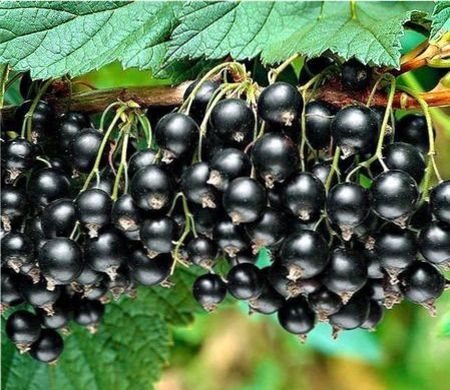

currant yield
Currant pruning
To maintain a good yield of currants, it is required to regularly prune the bushes. It is held in spring and autumn. Moreover, the main formation of the bush is carried out in the fall, leaving branches of different ages, and in the spring only dry, damaged shoots are removed. The weaker the stem, the more it is shortened. And be sure to cut out shoots bearing more than 4 years.
So, we found out what depends on yield of black currant... Proper care of the bushes throughout the season will allow you to get a consistently rich harvest of tasty healthy berries.
If you find an error, please select a piece of text and press Ctrl + Enter.
«>
Currant care after harvest
After harvesting, it is time for the autumn care of black currant bushes. This includes pruning, fertilizing, pest control and loosening the soil. Proper autumn care is the key to plant health, its successful wintering and a rich harvest next year.
Loosening the soil
The soil around the trunk circle must be weeded and loosened regularly. This is done in order to prevent the development of pathogens and pests, as well as to ensure that the applied fertilizers fall directly to the roots of the plant.
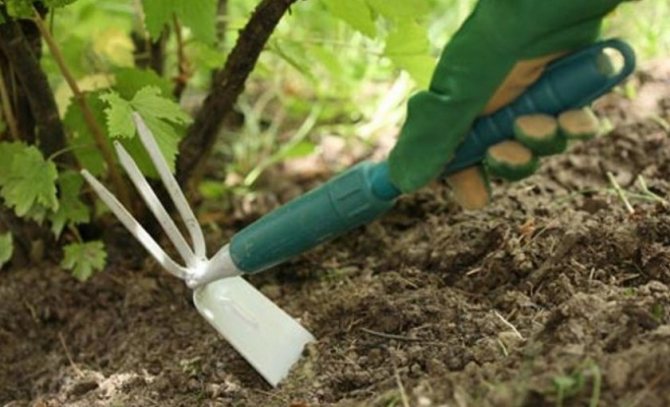

Removal of weeds begins in the spring with their appearance and continues throughout the season. Also, the soil must be superficially loosened after each watering and top dressing in order to prevent the formation of a dense crust, which will not allow the root system to breathe. It is necessary to dig up the earth in the near-trunk circle of black currant shallowly, not deeper than 10 cm. This is due to the close occurrence of the plant root system from the ground surface. The aisles are loosened regularly before and after harvest. Loosening is not performed during harvest.
How to feed in the autumn
To strengthen the plant before the upcoming wintering, autumn feeding is very important. After harvesting, under each bush, it is necessary to add 20 g of superphosphate and potassium sulfate.For this purpose, a recess (20 cm) is dug around the shrub on the border with its crown, 30 liters of water are poured into it and fertilizer is scattered. Further, the depression is compared to the ground.
Pest control
Currants are quite resistant to all kinds of pathogens and pests. However, some of them are periodically capable of damaging the plant.
Mostly currants are affected:
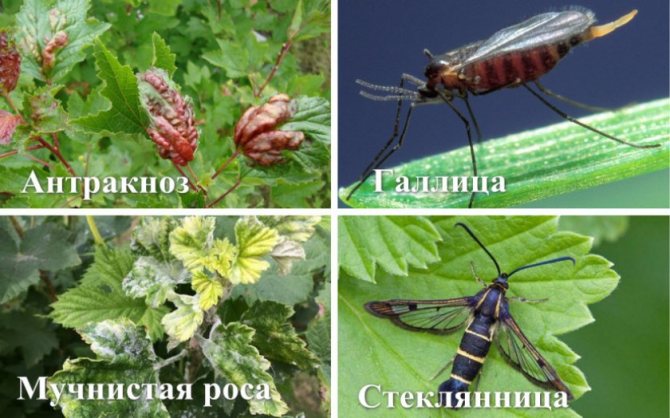

If fungal diseases are detected, the bush is sprayed with a 1% solution of Bordeaux liquid or fungicidal preparations such as Topaz and Fundazol. Any chemical processing of black currant must be discontinued 20 days before harvest. In order to get rid of pests, a week after treatment with fungicides, it is necessary to carry out an insecticide treatment:
- currant gall midge is eliminated by "Lipidocid" and "Kinmiks";
- the kidney mite dies from the drugs "Kleschevit" and "Karbofos";
- glass case is displayed by "Fitover", "Iskra", "Aktara";
- from aphids helps "Kinmiks", "Fufanon", "Iskra".
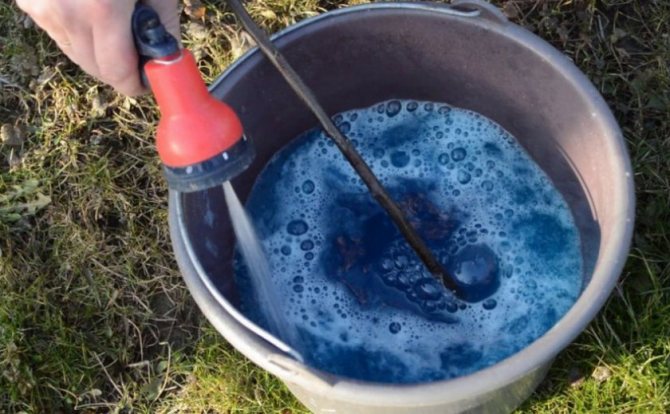

Even a healthy plant after harvesting requires spraying with a 1% solution of Bordeaux liquid for preventive purposes.
Black currant is one of the most popular crops used for industrial cultivation. It is quite easy to cultivate it, it is unpretentious to growing conditions. Plant care does not require much time and money. At the moment, there are many varieties that are resistant to diseases and pests, which also makes it possible to get a large harvest at the end of the season.
Self-cultivation of berry bushes for land owners is the most affordable way to start a business from scratch and gain financial stability and independence from an employer. Political processes affecting Russia and the economic situation in our country at the moment create favorable conditions for agricultural producers to start and develop their own business. The sanctions imposed by the Russian government against foreign suppliers resulted in a shortage of certain types of food products. The market demand for high-quality berry products is several times higher than the supply. In these conditions, the cultivation of black currant as a business can become a stable source of significant income.
